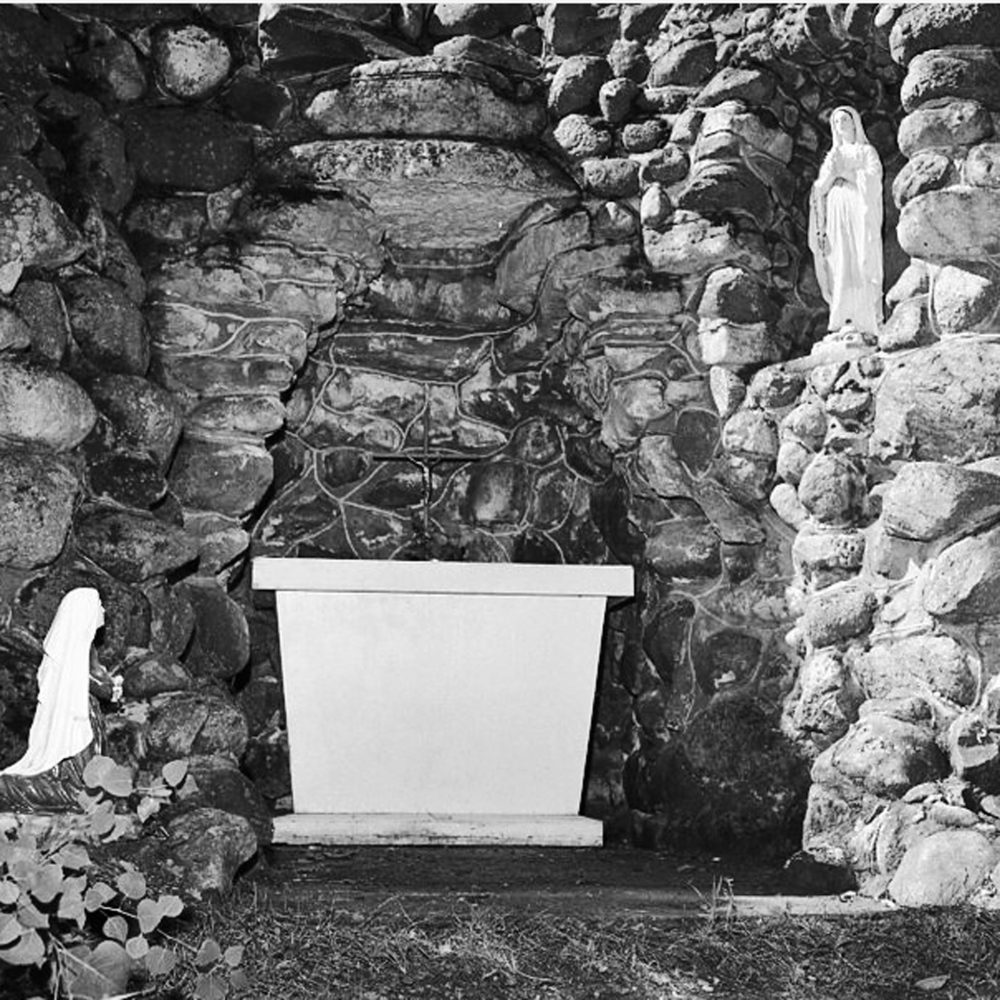COLUMN: Carillon Flashback, August 24, 1977 – Early St Malo priest builds replica of Lourdes grotto
Advertisement
Hey there, time traveller!
This article was published 18/08/2023 (639 days ago), so information in it may no longer be current.
St Malo’s second parish priest, Father Abel Noret, brought with him from France his country’s traditional devotion to the Lady of Lourdes. He resolved to erect a grotto, a replica of that in Lourdes.
After Father Noret’s arrival in St Malo in 1895, he came across a quiet, remote spot which reminded him of the grotto in France. This was before the advent of Highway 59 and the St Malo Provincial Park.
Eight months after he had discovered the wooded grove and shallow river, a voluntary group of parishioners began to clear brush, fill hollows and construct a small chapel on the south bank of the river.

The grotto site was separated from the parish church and the village by dense wood. A trail was needed to link them, but Father Noret did not require the services of a surveyor. Instead the priest sent someone to ring the church bell. The woodchoppers began to cut a path through the wood from the grotto site towards the sound of the bell. Although the road they created is no longer used since the opening of Highway 59, it still exists.
By 1902, Father Noret’s plans for the sanctuary had become more ambitious and impressive. The little chapel was replaced by an actual grotto built of fieldstone, readily found in the area. After the completion of the stone walls, a keystone was needed to complete the arch of the vault. Hunting about, the workers found a large, flat stone of the proper dimensions, high up on the bank. Father Noret and his two helpers realized they would have great difficulty positioning the stone without the use of a crane.
“If we roll it down, there is a risk we will smash everything, the walls of rock and the grotto. Yet, we have to risk it.
The three men heaved and the rock started to slide down the bank. Chance, luck, or heavenly intervention: call it what you will, but the rock stopped at the precise place destined for it as the keystone of the arch. Father Noret and his helpers did not move it and the keystone is still in exactly the same position today.
In 1904, the Catholic world celebrated the 50th anniversary of the Apparition at Lourdes. The St Malo parishioners decided to commemorate the event by constructing a chapel on the bank above the grotto, facing the wooden benches which served to seat pilgrims at the site.
On July 28, 1906, Archbishop Langevin of St Boniface solemnly blessed the new chapel and presided over the pilgrimage, which brought together a large number of people.
Father Arthur Benoit, who became parish priest in 1936, was instrumental in further developing the site of the grotto. He had pavilions constructed for the use of visitors.
To obtain more seating space before the grotto, the river was directed to a new channel. At one time, the space between the grotto and the river was much narrower than it is today.
Semi-circular paths descending from the top of the bank to the altar and shelter added another note of resemblance to the Lourdes cenacle in France.
The little wooden chapel weathered over the years, and renovations and many face-lifts were necessary. A more modern form emerged without the steeple and elaborate turrets.
Little by little, people from neighboring parishes joined those of St Malo for their annual pilgrimage and the St Malo Grotto grew in importance.
The most recent visitor book dates from August 25, 1968 to August 21, 1971, and reveals the many places grotto visitors come from. Guests travelled from every part of the province, from Altona to Zhoda. In fact, each province is well represented and pilgrims from 21 states of the United States have signed the register, as well.
Many other countries which are represented include Brazil, Africa, Vietnam, Belgium, Italy and Israel.
The annual pilgrimage usually takes place about mid-August. The 1976 pilgrimage was attended by about 3,000 to 3,500 people.
Father Noret was probably thinking only of his own parish as he worked and planned the sanctuary. Little did he dream his quiet grotto near St Malo would draw so many visitors from all over the world.
– with files from Carol Talbot.
